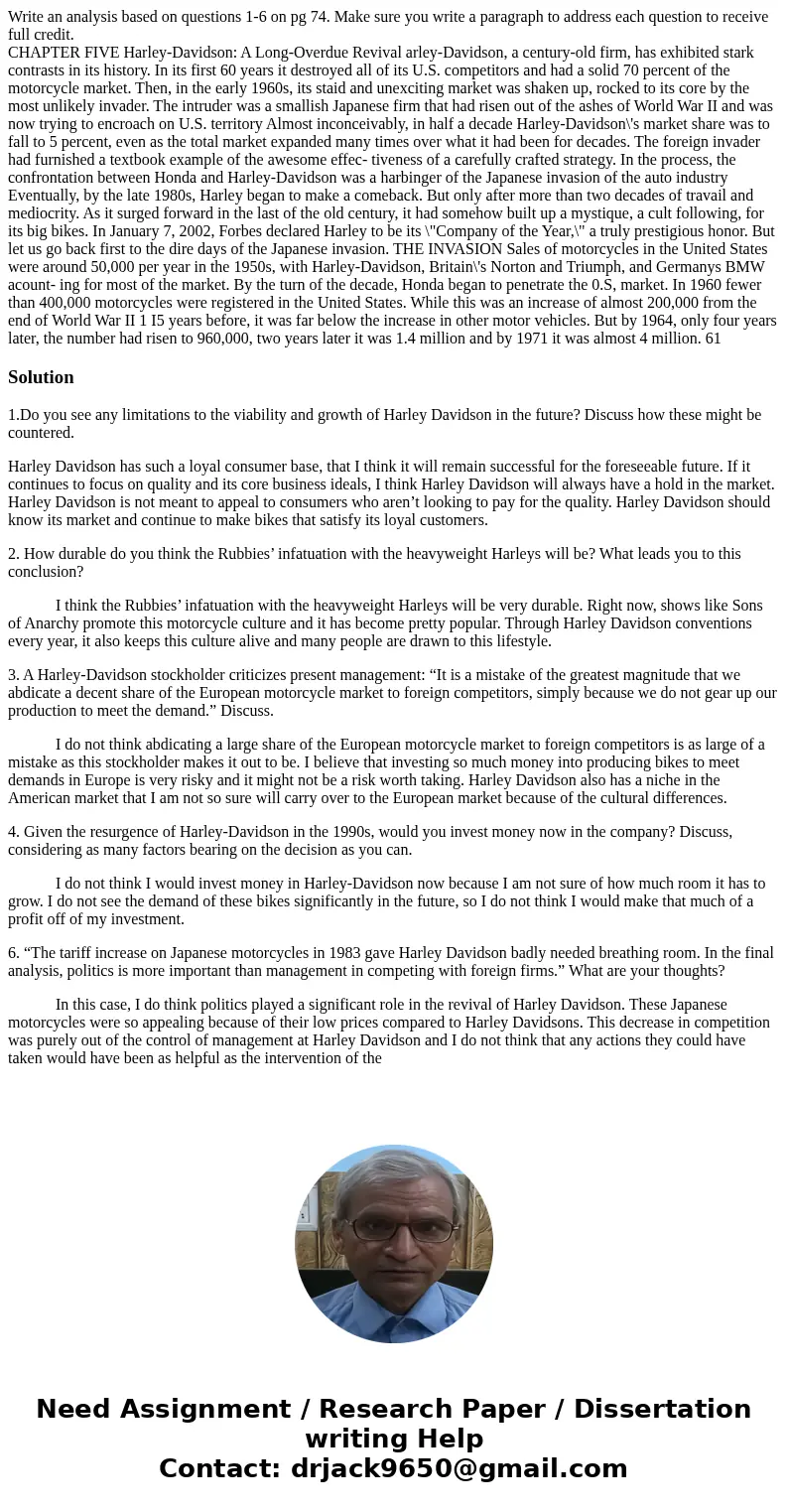Write an analysis based on questions 16 on pg 74 Make sure y
Solution
1.Do you see any limitations to the viability and growth of Harley Davidson in the future? Discuss how these might be countered.
Harley Davidson has such a loyal consumer base, that I think it will remain successful for the foreseeable future. If it continues to focus on quality and its core business ideals, I think Harley Davidson will always have a hold in the market. Harley Davidson is not meant to appeal to consumers who aren’t looking to pay for the quality. Harley Davidson should know its market and continue to make bikes that satisfy its loyal customers.
2. How durable do you think the Rubbies’ infatuation with the heavyweight Harleys will be? What leads you to this conclusion?
I think the Rubbies’ infatuation with the heavyweight Harleys will be very durable. Right now, shows like Sons of Anarchy promote this motorcycle culture and it has become pretty popular. Through Harley Davidson conventions every year, it also keeps this culture alive and many people are drawn to this lifestyle.
3. A Harley-Davidson stockholder criticizes present management: “It is a mistake of the greatest magnitude that we abdicate a decent share of the European motorcycle market to foreign competitors, simply because we do not gear up our production to meet the demand.” Discuss.
I do not think abdicating a large share of the European motorcycle market to foreign competitors is as large of a mistake as this stockholder makes it out to be. I believe that investing so much money into producing bikes to meet demands in Europe is very risky and it might not be a risk worth taking. Harley Davidson also has a niche in the American market that I am not so sure will carry over to the European market because of the cultural differences.
4. Given the resurgence of Harley-Davidson in the 1990s, would you invest money now in the company? Discuss, considering as many factors bearing on the decision as you can.
I do not think I would invest money in Harley-Davidson now because I am not sure of how much room it has to grow. I do not see the demand of these bikes significantly in the future, so I do not think I would make that much of a profit off of my investment.
6. “The tariff increase on Japanese motorcycles in 1983 gave Harley Davidson badly needed breathing room. In the final analysis, politics is more important than management in competing with foreign firms.” What are your thoughts?
In this case, I do think politics played a significant role in the revival of Harley Davidson. These Japanese motorcycles were so appealing because of their low prices compared to Harley Davidsons. This decrease in competition was purely out of the control of management at Harley Davidson and I do not think that any actions they could have taken would have been as helpful as the intervention of the

 Homework Sourse
Homework Sourse